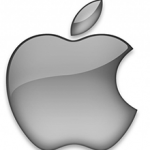 In addition to Google Android and Microsoft Windows, there are other operating systems that contain accessibility features, such as free Linux-based options.
In addition to Google Android and Microsoft Windows, there are other operating systems that contain accessibility features, such as free Linux-based options.
As we’ve highlighted in the What’s possible section, budget priced computers such as the $50 ‘Raspberry Pi’ run a variety of Linux-based operating systems including full desktop capabilities and media centres.
The main accessibility tool in a number of Linux distributions is called Orca, which is both a screen reader and a screen magnifier. However, Linux-based operating systems are generally considered difficult for the average consumer to set up and configure, and they work quite differently to more popular operating systems. Therefore, setting up a Linux-based system is generally recommended for people who have advanced technical knowledge.
There are also a number of handy products such as the Google Chromecast which allow you to use a variety of devices to send information to your television. This is useful if you want to enlarge text by displaying it on a large screen TV. Most of these types of products will need a smartphone, tablet or computer to effectively use them.
Due to a high purchase price, other options that contain accessibility features are not covered in detail through the Affordable Access site. Apple products such as the iPhone and iPad both contain a number of accessibility features, and you can buy specialist assistive technology products to provide additional accessibility support.
However, these products are significantly more expensive than the alternatives outlined above. From an accessibility perspective, it may be worth considering a cheaper comparable product such as a Google Android tablet before purchasing an expensive product such as an Apple iPad or specialist tablet device.
